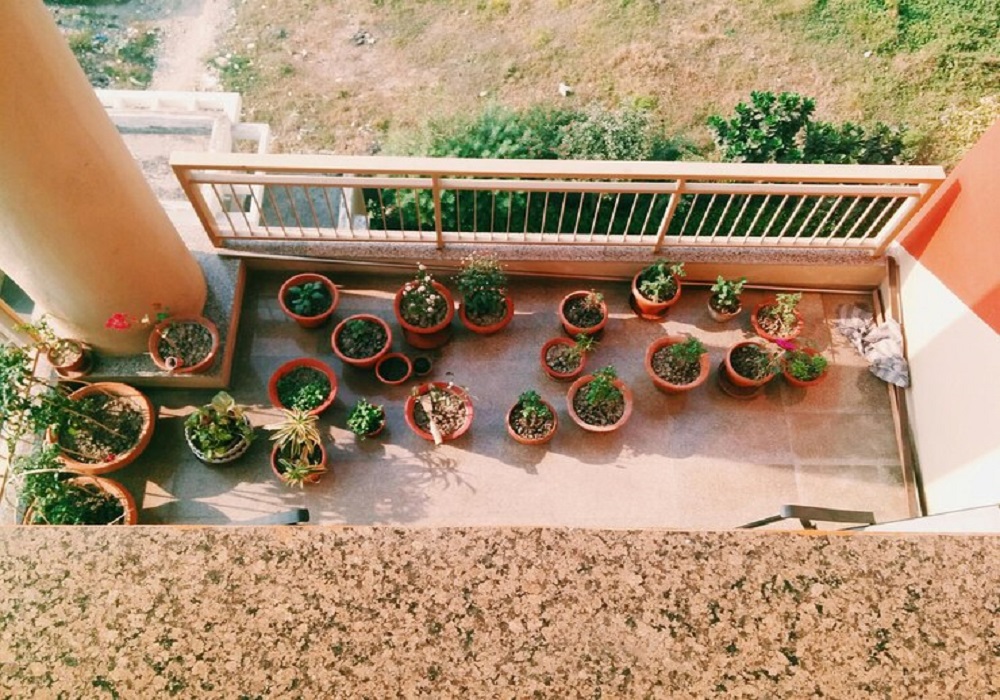Blossom on Your Balcony: Terrace Vegetable Garden Ideas in India Unveiled
Terrace vegetable gardening has gained immense popularity in India, offering urban dwellers a green oasis right at their doorstep. With limited space and increasing awareness about organic produce, more people are turning to terrace gardening to grow their own fresh and healthy vegetables. In this article, we unveil some creative terrace vegetable garden ideas in India.
Choosing the Right Vegetables
When planning a terrace vegetable garden in India, it’s essential to choose vegetables that thrive in the local climate. Opt for heat-tolerant varieties like tomatoes, chili peppers, eggplants, and leafy greens such as spinach and fenugreek. Herbs like mint, coriander, and curry leaves also do well in Indian conditions.
Container Selection and Preparation For Terrace Vegetable Garden
Selecting the right containers is crucial for terrace gardening success. Choose containers that are lightweight, durable, and have proper drainage holes. Plastic pots, grow bags, and recycled containers are popular choices. Before planting, ensure containers are clean and have adequate drainage to prevent waterlogging.
Soil and Fertilizer
Good quality soil is the foundation of a healthy terrace garden. Use a well-draining potting mix enriched with organic compost and vermicomposting. Additionally, incorporate organic fertilizers like cow dung or compost tea to provide essential nutrients to your plants.
Watering and Drainage
Proper watering is key to maintaining healthy plants in a terrace garden. Water plants deeply but less frequently to encourage strong root growth. Ensure containers have adequate drainage to prevent waterlogging, especially during the monsoon season.
Sunlight and Shade Management
Most vegetable plants require at least 6-8 hours of sunlight daily for optimal growth. Place your terrace garden in a sunny spot that receives ample sunlight throughout the day. If your terrace has limited sunlight, consider growing shade-tolerant vegetables like lettuce, arugula, and radishes.
Vertical Gardening
Vertical home gardening offers an effective method for conserving space in terrace gardens. Employ trellises, hanging baskets, and wall-mounted planters to cultivate climbing vegetables such as cucumbers, beans, and peas vertically. This approach not only optimizes space but also enhances the aesthetic appeal of your garden.
Companion Planting
Companion planting involves growing different plants together to benefit each other. For example, planting marigolds alongside tomatoes can deter pests, while growing basil near tomatoes enhances their flavor. Experiment with companion planting to promote biodiversity and improve overall garden health.
Pest Management
Preventing and managing pests is essential for a successful terrace garden. Monitor plants regularly for signs of pests or diseases and take prompt action to control infestations. Use natural remedies like neem oil spray, garlic spray, or companion planting to deter pests organically.
Seasonal Planting Guide
In India, terrace gardening can be done year-round with proper planning. Consult a seasonal planting guide to determine the best time to plant different vegetables based on your region’s climate and weather conditions. Practice succession planting and crop rotation to maximize yields and minimize pest problems.
Harvesting and Maintenance
Harvest vegetables when they reach their peak ripeness for the best flavor and nutrition. Regularly prune plants, remove weeds, and replenish soil nutrients to ensure healthy growth. Stay vigilant for signs of pests or diseases and address them promptly to prevent spread.
Creative Design Ideas
Get creative with your terrace vegetable garden design to make the most of your space. Use vertical trellises, hanging baskets, and tiered planters to add dimension and visual interest. Incorporate decorative elements like colorful pots, garden ornaments, and fairy lights to create a charming outdoor retreat.
Community and Sharing
Joining or starting a community terrace gardening initiative can be a rewarding experience. Share resources, knowledge, and surplus produce with neighbors to foster a sense of community and promote sustainable living practices. Collaborate on community composting projects or organize gardening workshops to educate and inspire others.
Health and Well-being Benefits
Apart from providing fresh and nutritious produce, terrace vegetable gardening offers numerous health and well-being benefits. Spending time outdoors in the sunshine, engaging in physical activity, and connecting with nature can reduce stress, improve mood, and promote overall wellness. Gardening is not just a hobby; it’s a therapeutic and fulfilling activity for the mind, body, and soul.
Conclusion
Terrace vegetable gardening tips is a rewarding and enjoyable way to connect with nature, grow your own food, and promote sustainable living practices. With the right ideas, techniques, and a little creativity, you can create a flourishing garden oasis on your balcony or terrace in India. Start small, experiment with different vegetables, and watch your garden blossom into a vibrant and productive space.
FAQs:
What are some easy-to-grow vegetables for beginners in terrace gardening?
For beginners, it’s best to start with easy-to-grow vegetables like tomatoes, chili peppers, spinach, lettuce, and herbs like mint, basil, and coriander. These plants are relatively low-maintenance and can adapt well to terrace gardening conditions.
Can I grow vegetables year-round on my terrace?
In most regions of India, terrace gardening can be done year-round with proper planning. However, it’s essential to choose vegetables that are suitable for the current season and adjust your planting schedule accordingly. Consult a seasonal planting guide to determine the best crops to grow during different times of the year.
How much time and effort does it take to maintain a terrace vegetable garden?
The amount of time and effort required to maintain a terrace vegetable garden depends on factors like the size of your garden, the number of plants you’re growing, and your level of experience. While terrace gardening does require regular watering, pruning, and monitoring for pests, many find it to be a rewarding and therapeutic hobby that doesn’t require excessive time or effort.






